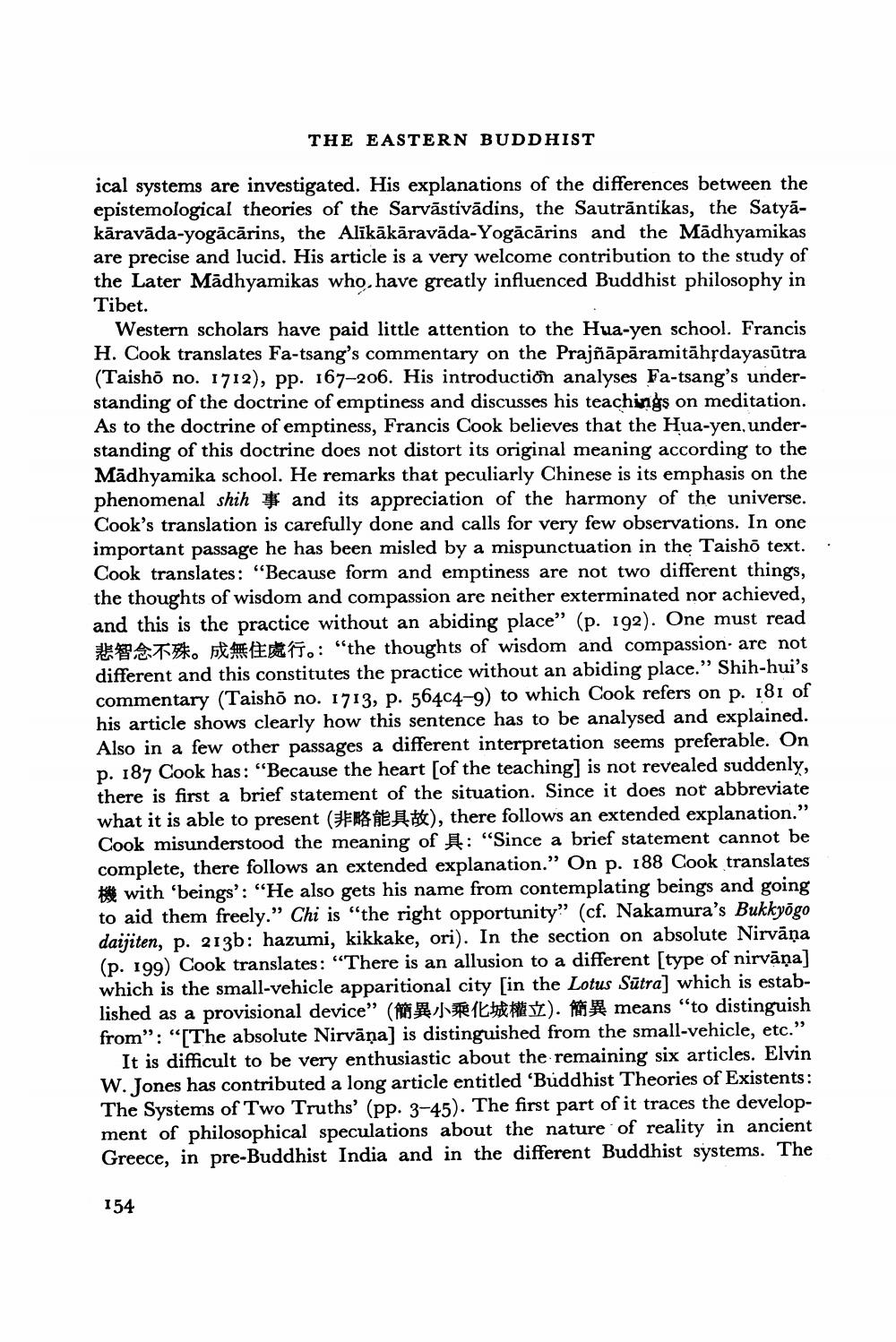________________
THE EASTERN BUDDHIST
ical systems are investigated. His explanations of the differences between the epistemological theories of the Sarvāstivādins, the Sautrāntikas, the Satyākāravāda-yogācārins, the Alīkākāravāda-Yogācārins and the Madhyamikas are precise and lucid. His article is a very welcome contribution to the study of the Later Madhyamikas who, have greatly influenced Buddhist philosophy in Tibet.
Western scholars have paid little attention to the Hua-yen school. Francis H. Cook translates Fa-tsang's commentary on the Prajñāpāramitāhṛdayasūtra (Taishō no. 1712), pp. 167–206. His introduction analyses Fa-tsang's understanding of the doctrine of emptiness and discusses his teachings on meditation. As to the doctrine of emptiness, Francis Cook believes that the Hua-yen, understanding of this doctrine does not distort its original meaning according to the Madhyamika school. He remarks that peculiarly Chinese is its emphasis on the phenomenal shih and its appreciation of the harmony of the universe. Cook's translation is carefully done and calls for very few observations. In one important passage he has been misled by a mispunctuation in the Taishō text. Cook translates: "Because form and emptiness are not two different things, the thoughts of wisdom and compassion are neither exterminated nor achieved, and this is the practice without an abiding place" (p. 192). One must read ATA. .: "the thoughts of wisdom and compassion are not different and this constitutes the practice without an abiding place." Shih-hui's commentary (Taishō no. 1713, p. 564c4-9) to which Cook refers on p. 181 of his article shows clearly how this sentence has to be analysed and explained. Also in a few other passages a different interpretation seems preferable. On p. 187 Cook has: "Because the heart [of the teaching] is not revealed suddenly, there is first a brief statement of the situation. Since it does not abbreviate what it is able to present (E), there follows an extended explanation." Cook misunderstood the meaning of : "Since a brief statement cannot be complete, there follows an extended explanation." On p. 188 Cook translates
with 'beings': "He also gets his name from contemplating beings and going to aid them freely." Chi is "the right opportunity" (cf. Nakamura's Bukkyōgo daijiten, p. 213b: hazumi, kikkake, ori). In the section on absolute Nirvāņa (p. 199) Cook translates: "There is an allusion to a different [type of nirvana] which is the small-vehicle apparitional city [in the Lotus Sutra] which is established as a provisional device" (Z). A means "to distinguish from": "[The absolute Nirvāņa] is distinguished from the small-vehicle, etc."
It is difficult to be very enthusiastic about the remaining six articles. Elvin W. Jones has contributed a long article entitled 'Buddhist Theories of Existents: The Systems of Two Truths' (pp. 3-45). The first part of it traces the development of philosophical speculations about the nature of reality in ancient Greece, in pre-Buddhist India and in the different Buddhist systems. The
154




